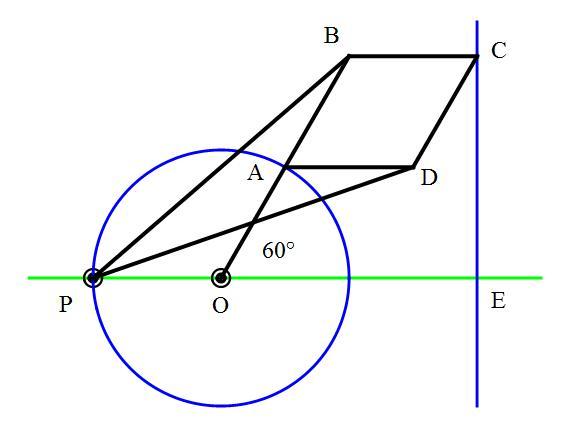Peaucellier-Lipkin Linkage Forces
This classic mechanical linkage results in a straight line motion of point as point is rotated about center .

Both points and are fixed, as links and are free to rotate about them.
The lengths of the links are
while are co-linear, and , , and
and
Force is applied tangentially at point (perpendicular to ), resulting in force along the line at point .
At angle , find the ratio of the forces accurate to three decimal places. As this is an exercise in classical mechanics, use the Conservation of Energy Law to determine this ratio.
Note: A property of Peaucellier-Lipkin linkages is that points are always co-linear.
The answer is 2.000.
This section requires Javascript.
You are seeing this because something didn't load right. We suggest you, (a) try
refreshing the page, (b) enabling javascript if it is disabled on your browser and,
finally, (c)
loading the
non-javascript version of this page
. We're sorry about the hassle.
Since force applied over distance is energy, or F d = E , and energy is conserved, then we have
F ( O A ) d θ = F d θ = F ′ d x
where F is tangential force applied at point A over distance d θ , and F ’ is the resultant force at point C over distance d x . Because we know that points P , A , C are co-linear at all times, then the position of x as a function of θ is
x = 3 T a n ( 2 θ )
Differentiation then gets us
d θ d x = F ′ F = 2 3 ( S e c ( 2 θ ) ) 2
For θ = 6 0 ° , this works out to 2 , so F is exactly twice that of F ′